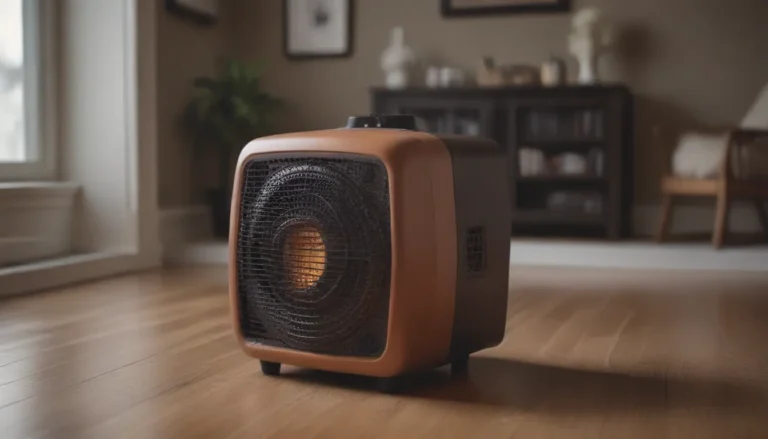Understanding EM Heat on Your Thermostat: A Comprehensive Guide for Homeowners

If you’ve ever looked at your thermostat and wondered what the mysterious “EM Heat” setting means, you’re not alone. Many homeowners are unsure of how and when to use this feature properly. In this in-depth guide, we will explore the ins and outs of EM Heat, also known as emergency heat, on your thermostat. By the end of this article, you will have a better understanding of when to use EM Heat, how it works, and why it should only be used in emergencies.
What is EM Heat on a Thermostat?
The EM Heat setting on your thermostat stands for emergency heat and serves as a backup heating system that can be activated in case the primary heating system fails. This feature is especially useful in colder climates where the outside temperature may drop to extreme lows, causing the primary system to struggle to keep the home warm. If your thermostat has an EM Heat setting, it means you likely have a heat pump as well as a secondary heating system, such as gas, oil, electric, or hot water.
How and When to Use EM Heat
When should you use the EM Heat setting on your thermostat? The key is to use it only in emergencies when your primary heating system fails. By manually switching over to emergency heat mode, you allow the heat pump to bypass its standard operating process and rely solely on the auxiliary heating system. This can provide the warmth needed to keep your home comfortable during a heating system failure.
However, it’s important to note that using EM Heat during normal weather patterns is not recommended. This is because relying solely on the secondary heating system can result in higher utility bills and less efficient heating. It’s best to allow the primary and secondary systems to work together to heat your home effectively.
Some thermostats may have an Aux Heat setting instead of an EM Heat mode, but they essentially serve the same purpose. Activating the Aux Heat setting turns off the primary heating system and activates the auxiliary heating system, providing additional heat when needed.
How EM Heat Works
Thermostats with an EM Heat or Aux Heat setting typically rely on a heat pump for primary heating. Heat pumps extract heat from the outdoors and pull it into the home to maintain a comfortable temperature. However, when temperatures drop too low for the heat pump to be effective, the auxiliary heating system is activated to provide additional heat.
EM Heat or Aux Heat may also be automatically activated when the indoor temperature is significantly below the thermostat setting. This ensures that your home reaches the desired temperature more quickly during cold weather. It’s important to remember that using emergency heat mode bypasses the heat pump entirely, resulting in higher energy consumption and less efficient heating.
Why EM Heat Should Only Be Used in Emergencies
The primary reason to use EM Heat only in emergencies is to ensure the efficiency of your heating system. When the thermostat is set to EM Heat, the primary system is bypassed, and only the auxiliary heating system is used. This results in higher heating costs and puts additional strain on your heating and cooling system.
In situations where the heat pump fails, switching to EM Heat can help maintain a comfortable temperature in your home. However, it’s crucial to contact a licensed HVAC technician as soon as possible to address the underlying issue. Remember that EM Heat is designed for emergency situations and should not be used as a primary heating method.
How Much Does Emergency Heat Cost?
It’s important to consider the cost implications of using EM Heat on your thermostat. While the function may seem beneficial in heating your home quickly, it actually results in higher energy consumption and increased utility bills. Emergency heat mode typically uses 2 to 3 times more gas or electricity than the standard heating system, leading to higher costs for homeowners.
If your heat pump breaks down and you need to switch to EM Heat mode, it’s essential to have the system repaired promptly to avoid excessive heating costs. Additionally, maintaining your heat pump regularly can help prevent unexpected breakdowns and ensure efficient operation throughout the year.
Tips for Using EM Heat
- Use EM Heat only in emergencies when your primary heating system fails.
- Avoid using EM Heat during normal weather patterns to maintain heating efficiency.
- Regularly service and maintain your heat pump to prevent breakdowns and ensure optimal performance.
- Contact a licensed HVAC technician if you experience issues with your heating system.
Conclusion
In conclusion, understanding how and when to use EM Heat on your thermostat is essential for maintaining a comfortable and cost-effective home environment. By using emergency heat mode only in emergencies and prioritizing regular maintenance of your heating system, you can ensure efficient operation and lower utility costs. Remember that EM Heat is a backup setting and should not be used as a primary heating method. If you have any questions or concerns about your thermostat settings, don’t hesitate to contact a professional HVAC technician for assistance. Stay warm and cozy this winter with a well-maintained heating system!





